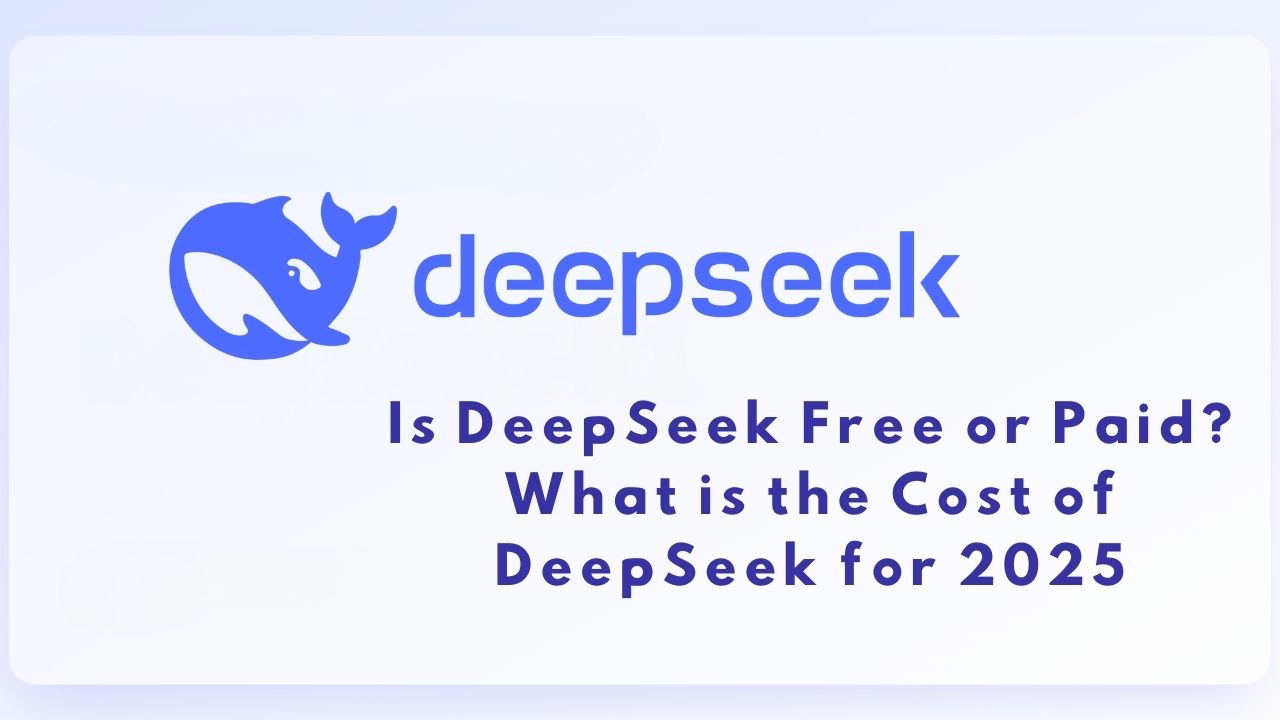Artificial intelligence (AI) is changing the way we work and live, and DeepSeek is one of the leading names in this field. Many people wonder: Is DeepSeek free or paid? In this blog, we’ll explain DeepSeek’s pricing for 2025, its free and paid services, and why it’s a cost-effective choice compared to other AI models.
What Does DeepSeek Offer for Free?
DeepSeek provides several free services, making it accessible to everyone. Here’s what you can use without paying:
- Open-Source Models: DeepSeek’s models, like DeepSeek-V3 and DeepSeek-R1, are available under the MIT license. This means you can download, modify, and use them for free, whether for personal, academic, or commercial purposes.
- Mobile App and Web Interface: The DeepSeek AI assistant app is free to download and use. It’s available on both the Apple App Store and Google Play, with no subscription fees required.
These free options make DeepSeek a popular choice for individuals and businesses exploring AI without upfront costs.
What Are DeepSeek’s Paid Services?
For advanced users and businesses, DeepSeek offers paid services through its API. Here’s what you need to know about the costs:
- API Access: Developers and businesses can access DeepSeek’s API for a competitive price. The cost is 0.55 per million input tokens and 0.55 per million input tokens and 2.19 per million output tokens.
- Cost Comparison: DeepSeek’s pricing is much lower than competitors like OpenAI. For example, OpenAI’s GPT-4 charges 15 per million input tokens and 15 permillion input tokens and 60 per million output tokens.
This makes DeepSeek an affordable option for businesses that need powerful AI without high costs.
Why Is DeepSeek So Cost-Effective?
DeepSeek stands out for its cost-efficiency. Here’s why:
- Open-Source Approach: By releasing its models under the MIT license, DeepSeek reduces development costs and encourages community contributions.
- Efficient Training: DeepSeek uses advanced techniques like reinforcement learning, reward engineering, and knowledge distillation to minimize computational expenses.
- Hardware Optimization: Despite restrictions on high-performance GPUs, DeepSeek optimized its training using Nvidia H800 GPUs, which are cost-effective yet powerful.
These strategies allow DeepSeek to offer high-quality AI services at a fraction of the cost of its competitors.
How Does DeepSeek Compare to Other AI Models?
Let’s compare DeepSeek’s pricing with other leading AI models:
- DeepSeek-V3:
- Input tokens: $0.01 per million tokens (the lowest in the industry).
- Output tokens: $0.28 per million tokens.
- OpenAI GPT-4:
- Input tokens: $10 per million tokens.
- Output tokens: $30 per million tokens.
- Claude-3.5-Sonnet:
- Input and output tokens: $30 per million tokens.
DeepSeek’s pricing is not only lower but also more transparent, making it a preferred choice for cost-conscious users.
How Does DeepSeek Keep Training Costs Low?
DeepSeek’s ability to keep costs low starts with its training process:
- DeepSeek-V3: This model was trained for just 5.5million∗∗,afractionofthe∗∗5.5million∗∗,afractionofthe∗∗100 million to $1 billion spent by competitors like OpenAI.
- DeepSeek-R1: Designed to rival OpenAI’s o1, this model was developed at an even lower cost, showcasing DeepSeek’s commitment to affordability.
By focusing on efficiency and innovation, DeepSeek delivers high-quality AI without the hefty price tag.
What Does the Future Hold for DeepSeek?
DeepSeek’s low-cost, high-performance models are reshaping the AI landscape. Its open-source strategy and cost-efficiency are making AI more accessible to industries like healthcare, finance, and education. As more businesses adopt DeepSeek, it’s clear that this model is a strong contender in the AI market.

